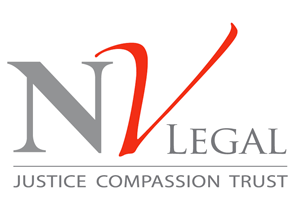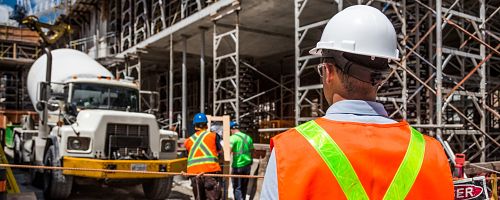COVID-19 safety advice for construction and factory workers
As industries prepare for a phased return to work following the Coronavirus pandemic many must introduce new health and safety measures to ensure businesses are COVID-19 secure.
The government has consulted with 250 businesses, unions, industry leaders as well as devolved administrations to produce a series of guidelines to help make workplaces as safe as possible and to give employees the confidence to return to work.
It has produced guidance to help employers, employees and the self-employed understand how to work safely during the COVID-19 pandemic, keeping as many people as possible two metres apart from those they do not live with.
The guidance sets out measures which any business should implement before considering reopening premises. It outlines practical steps for businesses focused on five key points, which should be implemented as soon as it is practical:
- Work from home, if you can
All reasonable steps should be taken by employers to help people work from home. But for those who cannot work from home and whose workplace has not been told to close, employees should return to work. Staff should speak to their employer about when their workplace will open.
- Carry out a COVID-19 risk assessment, in consultation with workers or trade unions
Employers will need to carry out COVID-19 risk assessments in consultation with their workers or trade unions, to establish what guidelines to put in place. If possible, employers should publish the results of their risk assessments on their website and all businesses with over 50 employees will be expected to do this.
- Maintain social distancing, wherever possible
Employers should re-design workspaces to maintain two-metre distances (one metre with risk mitigation where two metres is not viable) between people by staggering start times, creating one-way walk-throughs, opening more entrances and exits, or changing seating layouts in break rooms.
- Where people cannot be apart, manage transmission risk
Employers should investigate putting barriers in shared spaces, creating workplace shift patterns or fixed teams minimising the number of people in contact with one another, or ensuring colleagues are facing away from each other.
- Reinforcing cleaning processes
Workplaces should be cleaned more frequently, paying close attention to high-contact objects like door handles and keyboards. Employers should provide handwashing facilities or hand sanitisers at entry and exit points.
Within any industry, in an emergency, such as an accident at work it states that people do not have to stay two metres apart if it would be unsafe. If assisting in an accident, employees should pay particular attention to sanitation measures immediately afterwards, including washing hands.
If you have been involved in an accident or illness at work CLICK HERE to read our blog ’10 things you must do after an accident at work.’
CLICK HERE for FREE legal advice on accidents or illness in the workplace.
Some industries such as construction and factories inherently pose a higher risk for accidents in the workplace.
The government has produced specific guidance for individual industries. Two industries included in the guidance, which also have some of the highest rates of accidents in the workplace, are construction and factories, plants, or warehouses.
Construction and other outdoor work
Outdoor work is a broad area and the government includes the following industries within its guidance for construction and outdoor work:
- construction
- energy and utilities
- farming and agriculture (including seasonal labour)
- forestry
- waste management and other infrastructure
- railway services
- street and highway services
Firms must follow the five key points previously outlined but additional measures should be implemented within the construction and outdoor work sector.
Signage should be in view with visible public notices to inform workers, customers, visitors, contractors, and the public to maintain social distancing whilst near the workplace. If the public are in the vicinity of the site, visible signage may be used to outline type of work that is being performed.
If personal protective equipment (PPE) is already used in the workplace to protect against non-COVID-19 risks, this should continue. The guidance states that the use of additional PPE to protect against COVID-19 is not necessary unless the risk of COVID-19 transmission is very high such as a clinical setting. It should instead be managed through social distancing, hygiene and fixed teams or partnering.
The number of contacts each worker has should be kept to a minimum. Ways to do this include:
- Split teams into shift patterns
- Remove contact and limit shared tools, materials or job instructions
- If onsite accommodation is required create fixed groups of shared workers
- Minimise employees congregating – time clocks, entrances and exits and shift handovers
- Minimise vehicle sharing – if required clean thoroughly between use
For more detailed information on making construction industries COVID-19 secure CLICK HERE
Factories, plants and warehouses
The following industries are included within the guidance for factories, plants and warehouses:
- Manufacturing and chemical plants
- Food and other large processing plants
- Warehouses
- Distribution centres
- Port operations
Again the five key points should be implemented but additional measures are also required for those working in factories.
Social distancing must be adhered and movement within buildings and sites should be discouraged. For example, restricting access to some areas, encouraging use of radios or telephones, where permitted, and cleaning items between use. High traffic areas including corridors, lifts, turnstiles, and walkways should be regulated.
Contact should be minimised at gatehouse security, a yard or warehouse. For example, non-contact deliveries where electronic pre-booking is feasible. Where possible and safe have single workers load or unload vehicles.
For people who work in one place, workstations should allow them to maintain social-distancing wherever possible. If it is not possible to keep workstations two metres apart, then extra attention needs to be paid to equipment, cleaning, and hygiene to reduce risk.
Clear guidance on social-distancing and hygiene to people, such as, inbound delivery drivers or safety critical visitors, should be supplied on arrival. This could include signage, visual aids, and notification before arrival by phone, on the website or email.
Within the workplace cleaning procedures for the parts of shared equipment touched must be introduced. This should be after each use and included equipment, tools, and vehicles, such as pallet trucks and forklift trucks.
For more detailed information on making factories COVID-19 secure CLICK HERE
CLICK HERE for FREE legal advice on accidents or illness in the workplace.
Useful links
https://www.gov.uk/guidance/working-safely-during-coronavirus-covid-19
https://www.hse.gov.uk/news/social-distancing-coronavirus.htm


